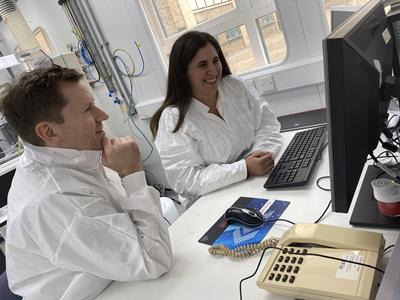Study examines ancient marine fossils to help uncover the mystery of Earth's past and future

A new study using marine fossils has demystified the Earth’s past and can be ‘a window into our future’, according to its co-authors from the University of Southampton.
Dr Tali Babila, along with Professor Gavin Foster, from the School of Ocean and Earth Science, investigated the rise of global temperatures from 14 million years ago in what is referred to as the middle Miocene Climate Optimum.
The collaborative study looked at the connection between the enigmatic global warmth of the Miocene Climatic Optimum and the Monterey formation – an oil-rich rock located off the California coast – and the volcanic activity of the Columbia River Basalts, Pacific Northwest USA.
The team found that warming temperatures in the middle Miocene Climate Optimum caused sea-levels to rise, an increase in marine production and encouraged carbon burial along continental shelves.
Dr Babila said: “Over time these marine fossils accumulate on the ocean floor and scientists are able to retrieve sediment cores to reveal the chemistry, temperature and climate of the geologic past.
She added: “We used a novel geochemical technique to measure the boron content of these ancient fossils to give us the unique opportunity to quantify and track the evolution of the ocean carbon system during the Middle Miocene.”
The initial cause of warmth during the Miocene Climate Optimum period has remained a mystery for geologists for many years, but this new study suggests similar global temperatures could be met in our lifetime.
Professor Gavin Foster, who also co-authored the study, said: “The rate of change is critical when we try to compare geologic events to the present day.
“Greenhouse gases like carbon dioxide were released from the massive volcanic eruptions of the Columbia River Basalts but over approximately a million years much longer than a human lifetime. On these slower timescales sea level rise, due to ice sheet melting, drowned the continental shelves allowing more organic carbon from the accumulation of marine organisms to be buried. This helped suck CO2 out of the atmosphere and keep some, but not all, of the warming in check”.
Dr Babila added: “So while we might approach global temperatures by 2100 like those last seen during the Miocene Climate Optimum we would reach them in a fraction of the time. As a result, it’s currently not clear that the feedback we saw operating in the Miocene will help us in the future.”
The paper Ocean Carbon Storage across the middle Miocene: a new interpretation for the Monterey Event is published in Nature Communications (doi: 10.1038/s41467-019-13792-0).
The study is funded by the National Environmental Research Council and involves the University of Southampton, Cardiff University and St Andrews University.